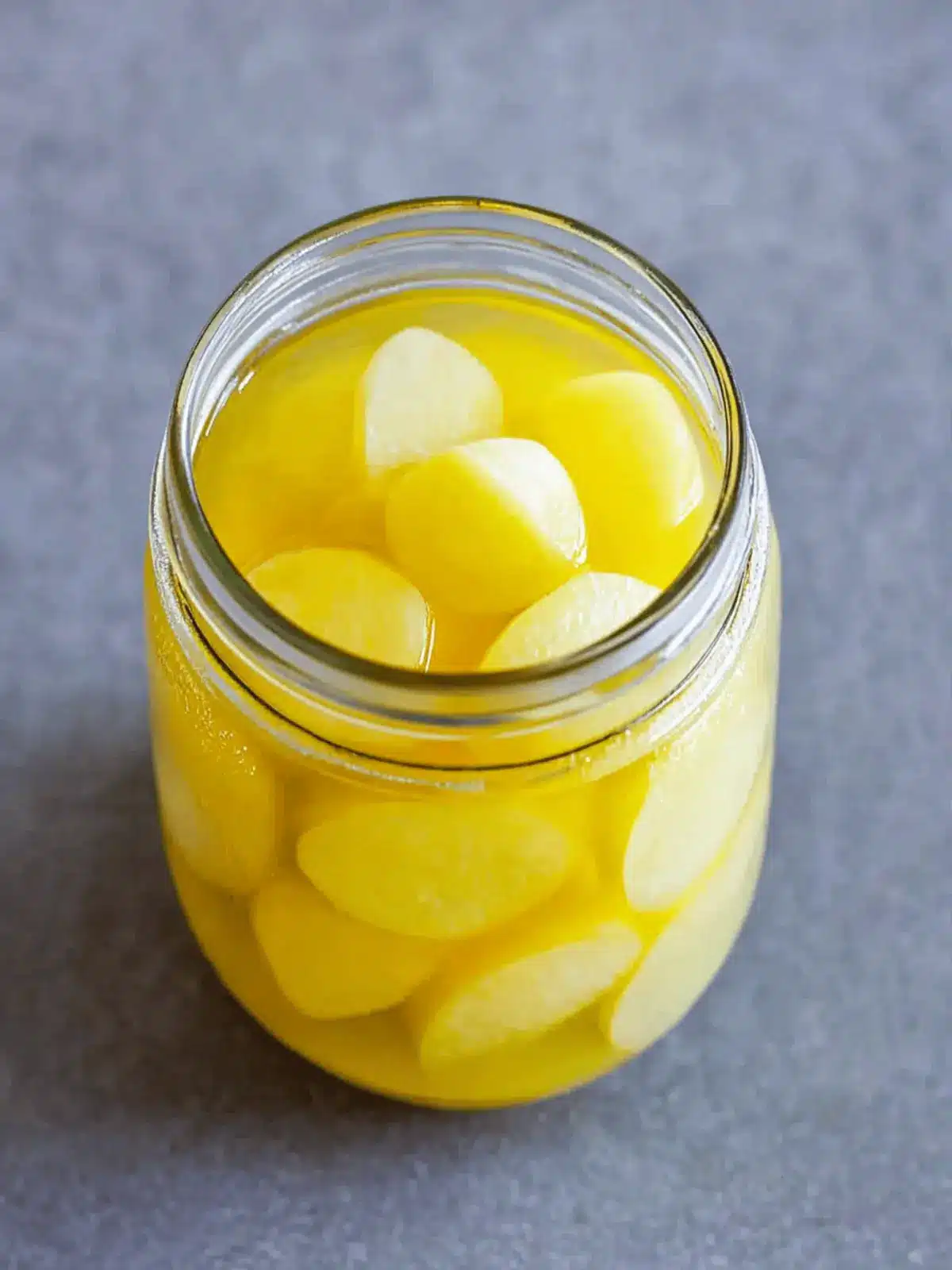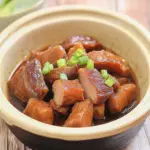There’s something uniquely satisfying about creating your own pickles at home, and my journey to discover the art of Japanese Yellow Pickled Radish, or Takuan, has been one of my favorite culinary adventures. The vibrant yellow hue and the crisp texture of daikon transformed by sugar, vinegar, and a touch of turmeric brings a delightful crunch that can elevate any meal. I was pleasantly surprised by how simple and quick it was to prepare this flavorful condiment!
Picture this: you’re preparing a lavish dinner, and just when you think your spread can’t get any better, you add a side of these tangy, sweet pickled radishes. Suddenly, your dish sings with new flavors, making every bite an experience. With just a few moments of prep, and the promise of more deliciousness to come as it ferments in your fridge, you’ll be tempted to use these bright slices with everything from sushi to sandwiches. So, let me guide you through this easy recipe and infuse your meals with a refreshing twist that will leave your taste buds craving more!
Why Love Japanese Yellow Pickled Radish?
Versatile: These bright pickles complement everything from sushi to sandwiches, enhancing your meals with a unique twist.
Quick Prep: With just three minutes of hands-on time, you can start this flavorful journey with little effort.
Flavor Fusion: The balance of sweetness, tang, and crunch will elevate any dish, making it a must-try in your kitchen.
Health Boost: Packed with fiber and minimal calories, it’s a guilt-free way to add flavor to your diet.
Homemade Joy: Making your own Takuan adds a personal touch that simply can’t be found in store-bought options.
Improves Over Time: As they ferment, the flavors deepen, giving you a delightful surprise in each bite, making the wait worthwhile! Explore more creative uses for pickles in your meals!
Japanese Yellow Pickled Radish Ingredients
For the Pickling Mixture
• 500 g daikon radish – The star of this recipe; choose fresh, firm radishes for the best flavor and texture.
• 100 g sugar – This balances the saltiness and adds a delightful sweetness to the pickles.
• 20 g salt – Essential for drawing out moisture and enhancing the flavor of the daikon.
• 20 ml vinegar – Adds the tangy kick that makes these Japanese Yellow Pickled Radishes truly pop.
• 6 drops yellow food dye or 1 tsp turmeric powder – Use turmeric for a natural alternative that brings an earthy flavor and vibrant color.
Enjoy these delicious pickles as a versatile addition to elevate your dishes!
How to Make Japanese Yellow Pickled Radish
-
Peel and Cut: Start by peeling the daikon radish, removing both ends. Cut it down the center and slice into half moons for optimal pickling.
-
Mix Ingredients: Place the daikon slices in a large ziplock bag, then add sugar, salt, vinegar, and your choice of yellow food dye or turmeric powder. This delightful mix will create flavors that harmonize beautifully.
-
Massage the Mix: Seal the bag and give it a good massage for a few minutes. This helps ensure every slice is evenly coated with the delicious mixture, creating that perfect pickled flavor.
-
Chill and Store: Wrap up the bag and place it in an airtight container in the fridge. Let it pickle for at least 24 hours for the flavors to develop, improving day by day!
Optional: Serve with sushi or as a crunchy topping on rice bowls for added flavor.
Exact quantities are listed in the recipe card below.
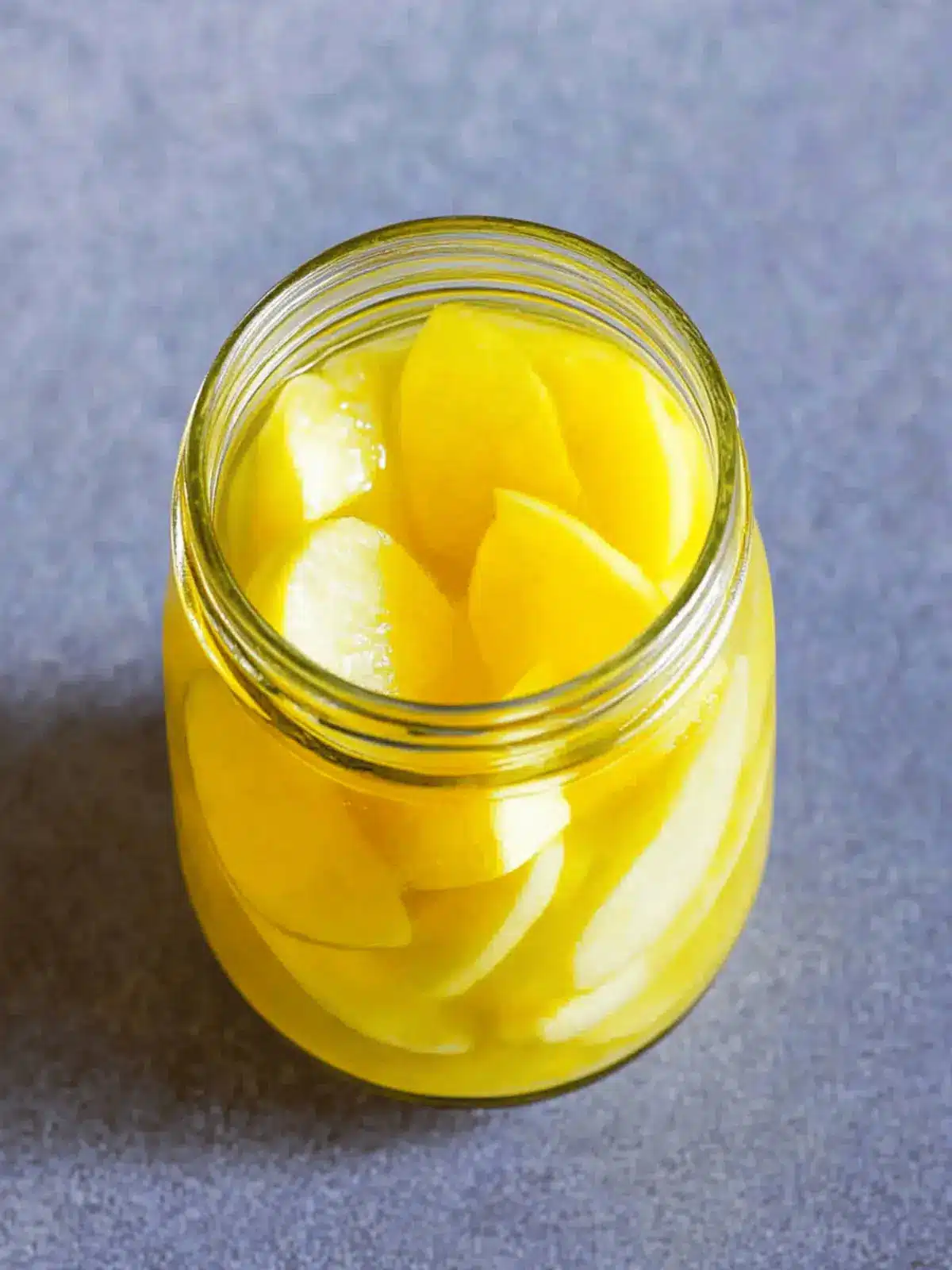
Japanese Yellow Pickled Radish Variations
Feel free to make this recipe your own by experimenting with these delicious twists and substitutions!
-
Spicy Kick: Add a pinch of chili flakes or a splash of sriracha for a zesty heat that will make your taste buds dance.
-
Herb Infusion: Incorporate fresh herbs like dill or cilantro into your pickling mixture for a fragrant, aromatic touch that complements the daikon beautifully.
-
Fruit Twist: Toss in thin slices of apple or pear to create a sweet and tangy blend that adds depth and surprises in every bite.
-
Vinegar Swap: Replace regular vinegar with flavored varieties, such as apple cider or rice vinegar, for an exciting change that can introduce unique notes to your pickles.
-
Gluten-Free Option: Ensure all ingredients are gluten-free, especially if using soy sauce as a dipping accompaniment, making this recipe suitable for all dietary needs.
-
Add Some Crunch: Mix in shredded carrots or sliced cucumbers for a varied texture that adds extra elements of surprise and satisfaction to your pickles.
-
Less Sweet: For a lighter version, reduce the sugar to 50 grams and substitute with stevia or another sugar alternative for a guilt-free treat.
-
Fermentation Boost: Experiment by adding a teaspoon of miso paste to the pickling bag for an umami kick and a probiotic boost that will enhance the health benefits of your Takuan.
Each variation tells a story and elevates your culinary experience, so dive in and discover which versions you enjoy the most!
What to Serve with Japanese Yellow Pickled Radish?
Elevate your meal with delightful pairings that enhance the unique flavors of these vibrant pickles.
- Sushi Rolls: The sweet and tangy profile of Takuan complements the umami of sushi, adding crunch to each bite.
- Rice Bowls: A sprinkle of these pickled radishes brightens up any hearty rice bowl, bringing a refreshing contrast to savory ingredients.
- Bahn Mi Sandwiches: The tangy flavor cuts through the richness of the meats, rounding out a deliciously balanced bite every time.
- Salads: Add a pop of color and flavor to your greens; the pickles provide a delightful crunch alongside fresh vegetables.
- Asian Noodle Dishes: Takuan serves as a zesty side to stir-fried noodles, balancing earthy tones with its crisp, sweet tang.
- Charcuterie Boards: These pickles shine when paired with cheeses and cured meats, offering a beautiful contrast that tantalizes the palate.
- Grilled Meats: Whether it’s chicken or beef, Takuan acts as a refreshing side, cleansing the palate between bites of hearty grilled fare.
- Green Tea: A warm cup can enhance the overall dining experience, providing a soothing backdrop to the vibrant flavors of the radishes.
- Mochi Ice Cream: End your meal with a sweet treat; the contrast of textures and temperatures pairs wonderfully with the sharpness of Takuan.
- Yuzu Sorbet: This light, zesty sorbet rounds off your meal with a refreshing finish, mirroring the tanginess of the pickled radish.
Expert Tips for Japanese Yellow Pickled Radish
-
Choose Fresh Daikon: Select firm daikon radishes with no bruises to ensure a crisp and flavorful pickle. Freshness enhances the taste of your Japanese Yellow Pickled Radish.
-
Control Sweetness: Adjust the sugar amount to fit your taste preferences, but be cautious not to omit it entirely; it’s essential for achieving that perfect sweet and tangy balance.
-
Tweak Pickling Time: If you’re in a hurry, you can enjoy the pickles after 24 hours, but patience is key—letting them sit longer will deepen the flavors and enhance the experience.
-
Use Quality Vinegar: The type of vinegar you choose can significantly influence flavor. Opt for rice vinegar for a more authentic Japanese taste or stick with what you have.
-
Avoid Over-mixing: When massaging the pickles in the bag, be gentle to prevent breaking the daikon slices; they should maintain their shape to provide that satisfying crunch.
How to Store and Freeze Japanese Yellow Pickled Radish
Fridge: Store your Japanese Yellow Pickled Radish in an airtight container in the fridge for up to 2 weeks. The flavors will continue to develop and improve over time.
Freezer: While freezing is not typically recommended for pickled items, you can freeze the radish slices for up to 3 months. Just be aware that the texture may change upon thawing.
Reheating: If you’re serving them warm, allow the pickles to come to room temperature first, or serve them chilled as a delightful accompaniment to your meals instead.
Using Leftovers: Any leftover radish can be repurposed in salads or as a colorful topping for rice bowls, ensuring nothing goes to waste while keeping your meals flavorful.
Make Ahead Options
These Japanese Yellow Pickled Radish are a fantastic choice for meal prep! You can slice and mix the daikon with sugar, salt, vinegar, and your choice of yellow food dye or turmeric up to 24 hours in advance. Simply follow the initial steps and place the sealed bag in an airtight container in the fridge. The pickles will be ready to enjoy the next day, and their flavor will continue to improve for up to 3 days as they ferment. This method not only saves you time but also ensures you have a delicious condiment ready for any meal. When you’re ready to serve, simply grab your pickled radish and enjoy its vibrant crunch that will elevate your dishes effortlessly!
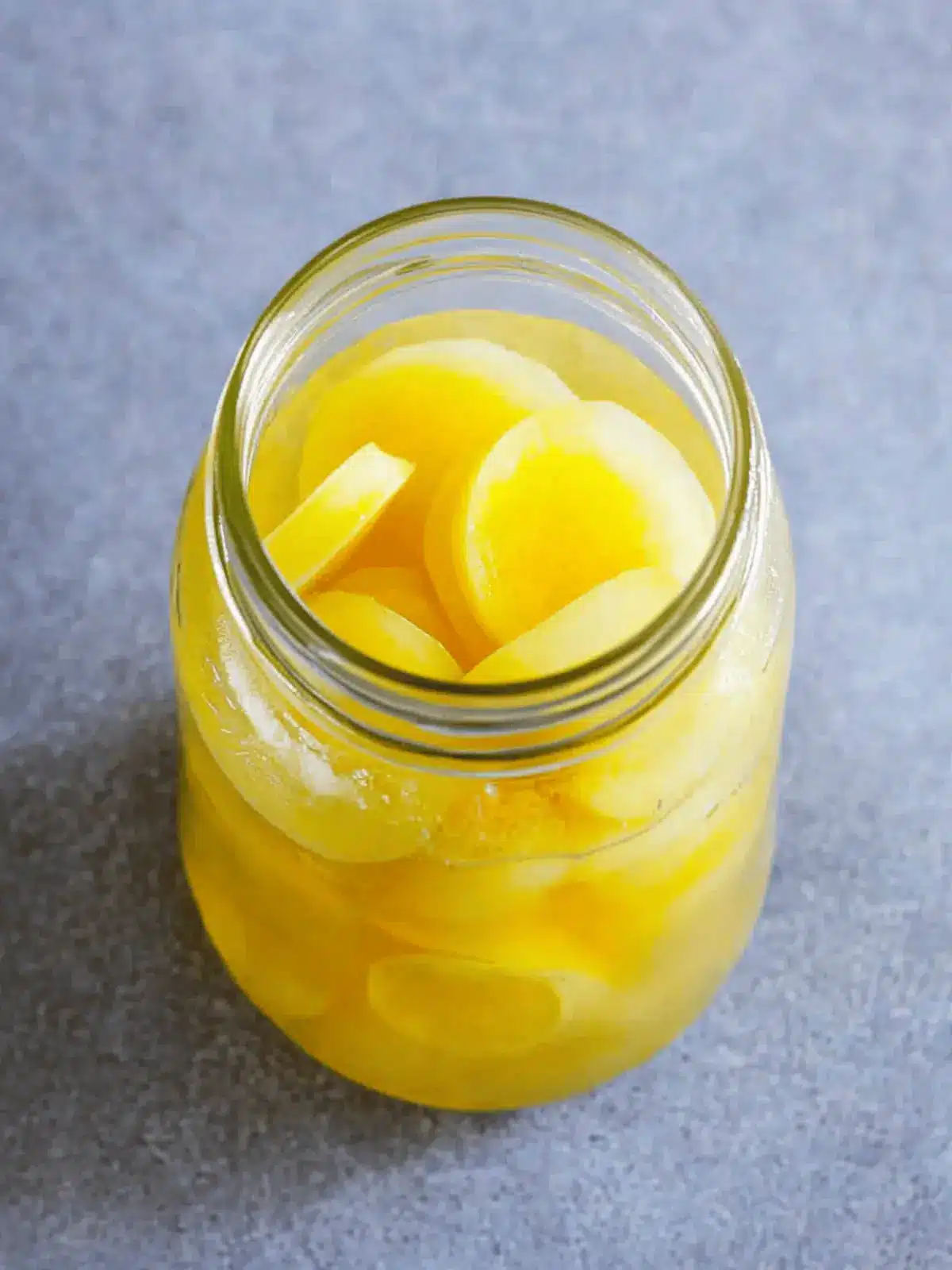
Japanese Yellow Pickled Radish Recipe FAQs
What kind of daikon radish should I use for Japanese Yellow Pickled Radish?
Absolutely! For the best results, choose firm, fresh daikon radishes without any bruises or dark spots. They should be solid to the touch and have a clean, crisp look, which ensures the perfect texture and flavor for your pickles.
How long can I store Japanese Yellow Pickled Radish in the fridge?
You can store your Japanese Yellow Pickled Radish in an airtight container in the fridge for up to 2 weeks. The flavors will actually improve as they sit, so feel free to enjoy them over time!
Can I freeze Japanese Yellow Pickled Radish?
While freezing is generally not recommended for pickled items due to texture changes, you can freeze the radish slices for up to 3 months. Just place them in a freezer-safe container. Remember, the texture might become softer once thawed, so they’re best enjoyed fresh.
What should I do if my pickles taste too salty?
If you find that your Japanese Yellow Pickled Radish is too salty, don’t worry! Simply give the slices a rinse under cold water to mellow the saltiness. You can also adjust future batches by reducing the salt slightly to achieve your desired taste.
Can I use alternative sweeteners if I want a lower sugar option?
Very much! You can use alternatives like honey, agave syrup, or even stevia to sweeten your pickles. Just keep in mind that using different sweeteners may slightly change the flavor profile, so adjust according to your taste preference.
Are Japanese Yellow Pickled Radish safe for pets or those with allergies?
Always be cautious! The ingredients used—sugar, salt, and vinegar—are not toxic for pets, but due to your furry friend’s dietary needs, it’s best to keep these pickles out of reach. If anyone in your household has allergies, especially to vinegar, please omit the ingredient, or consult with a healthcare provider for safe alternatives.
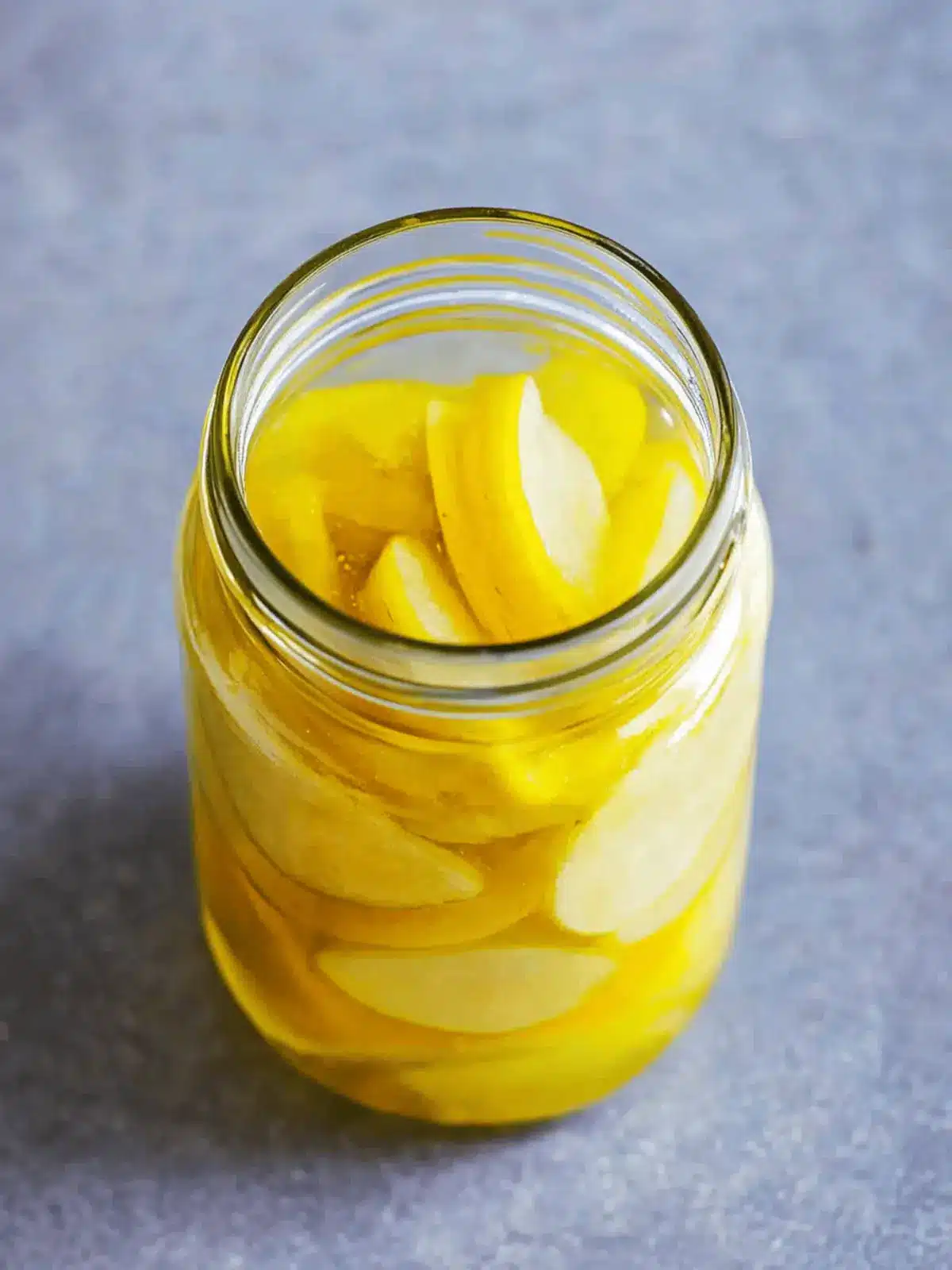
Japanese Yellow Pickled Radish: A Flavorful Homemade Delight
Ingredients
Equipment
Method
- Peel and cut the daikon radish into half moons.
- Mix daikon slices with sugar, salt, vinegar, and dye/turmeric in a ziplock bag.
- Seal the bag and massage the mixture for even coating.
- Place in an airtight container and refrigerate for at least 24 hours.

